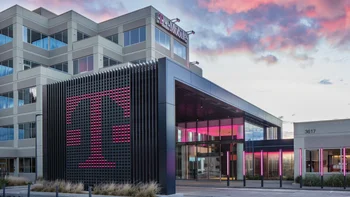Here's why Galaxy Z Flip's folding glass display cover is still protected by a plastic film

Beware of manufactured controversies should be the lesson from yesterday's brouhaha around the Galaxy Z Flip's ultrathin bendable display glass cover (UTG). It is apparently, gasp, covered by a plastic film of sorts, just like the original Galaxy Fold's colorless polyimide (CPI) display packaging was topped by such a material even before Samsung pulled it in for a redesign.
The guys from Sekyung Hi-Tech, who are the suppliers of the optical cover films for both the Galaxy Z Flip, and the Fold, were featured in an interview by the new Korean business publication The Elec yesterday, and explained why both bendable PI and glass covers need further protection, ultrathin or not.
As you can see in the independent teardown video here, the Z Flip's display indeed has a bendable glass cover, which is a commendable achievement. Еven ultrathin glass, however, as the one on the Z Flip, is still more fragile than plastic, and prone to cracks when dropped or bent at the extremes, say the industry insiders in the interview.
Nowhere is that more clearly visible than in the video below where the PbK guy tries to get to the bottom of things by bending the display sheet corner onto itself, and noticing hairline cracks appear even with the extra film on. Imagine what would the situation be without it, especially above the hinge area. Spoiler alert, he actually separates Sekyung's optical film from the UTG cover by simply peeling it off.

Thus, Samsung had to put an extra thin layer protection on top of the Galaxy Z Flip, despite that the optical film would be softer and more prone to scratching than the actual glass cover that the flexible OLED display is packaged with.
On the other hand, JerryRig's "scratches at level 6, deeper grooves at 7" shtick is still technically correct, as the very top of the Z Flip's bendable displays would be slightly softer than the rigid folding glass immediately underneath. That's the price to pay if you don't want the Z Flip's display drop-shattered like those boring old rigid slabs of yesteryear, though. Here's how Samsung approached the matter:
Galaxy Z Flip features an Infinity Flex Display with Samsung’s Ultra Thin Glass (UTG) to deliver a sleek, premium look and offer an immersive viewing experience. Samsung’s first-of-its-kind UTG technology is different from other Galaxy flagship devices. While the display does bend, it should be handled with care. Also, Galaxy Z Flip has a protective layer on top of the UTG similar to Galaxy Fold.
The 8" Galaxy Z Fold 2 will still use an ultrathin glass cover
The same logic goes for the CPI cover of the Galaxy Fold. Before the phone's launch, the speculation was that the PI film is simply attached to the OLED screen underneath with an extremely durable and flexible adhesive.
Samsung has been developing it for years, and it allows the whole package to bend at the middle by stretching a bit but not coming unglued. Called optical transparent adhesive film (OCA), this special type of elasticized glue can be bent thousands of times and retain its original size and form.
CPI film was used for Samsung Galaxy Fold and Huawei MateX cover windows. Motorola's Razr also applied CPI... when the foldable phone is folded, [however], the CPI film has wrinkles in the center of the screen and its visibility is not as good as glass. Another problem is that the cover window surface can be susceptible to scratches. To prevent this, Samsung Galaxy Fold hard-coated the CPI film at Dongwoo Fine-Chem, and added a special protective film produced by Sekyung Hi-Tech.
The Galaxy Z Fold 2 is likely to use UTG cover like the Flip, too, say the optical top film makers. If the UTG suppliers manage to stretch their yield for larger sheets, that is, as Samsung's third phone with flexible display is expected to sport an 8-incher when unfurled.
It will still be protected with their film at the top, though, tipped the Sekyung Hi-Tech folks in the interview below, as there is simply no other supplier on the market at the moment.

Previously, industry insiders from Korea summed up the flexible display cover options conundrum as "glass has to overcome the challenges of mass production and size, while film material has to raise the yield rate and perfect hard-coating technology." Not much has changed since then, but at least Sekyung Hi-Tech has perfected their cover film so that both the CPI and UTG cover versions can be protected at the very top.
The company has a lot of experience creating the films that seal those shimmering gradient colors and logos that companies like Samsung, Huawei or Oppo are now using on their phones, and it expects that Samsung may sell up to 5 million foldables this year, when we count the Z Flip and Fold 2, padding its bottom line further.
There you have it, glass or no glass, the top layer of foldable displays will need film protection for the foreseeable future, and with normal usage of bendy phones, that shouldn't be a problem for the end user, or a reason for controversy if the bending function works as advertised. What do you think?













Things that are NOT allowed: